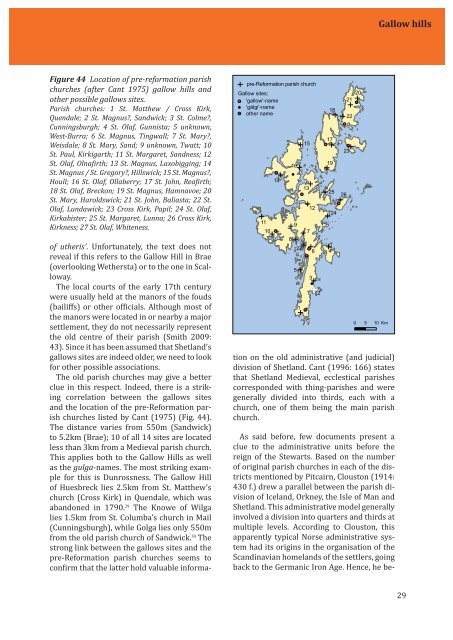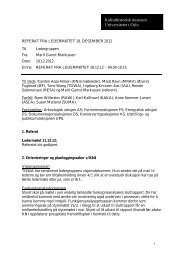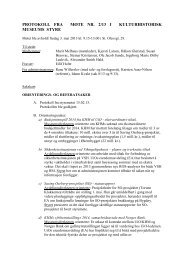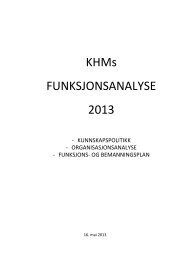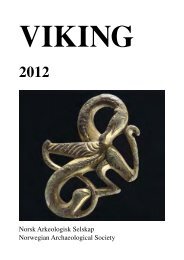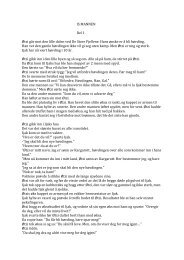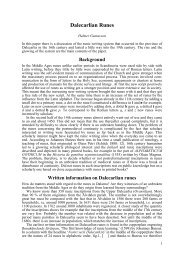TAP Field Report No. 5 A survey of Shetland's gallow hills Joris ...
TAP Field Report No. 5 A survey of Shetland's gallow hills Joris ...
TAP Field Report No. 5 A survey of Shetland's gallow hills Joris ...
- No tags were found...
Create successful ePaper yourself
Turn your PDF publications into a flip-book with our unique Google optimized e-Paper software.
Gallow <strong>hills</strong>Figure 44 Location <strong>of</strong> pre-reformation parishchurches (after Cant 1975) <strong>gallow</strong> <strong>hills</strong> andother possible <strong>gallow</strong>s sites.Parish churches: 1 St. Matthew / Cross Kirk,Quendale; 2 St. Magnus?, Sandwick; 3 St. Colme?,Cunningsburgh; 4 St. Olaf, Gunnista; 5 unknown,West-Burra; 6 St. Magnus, Tingwall; 7 St. Mary?,Weisdale; 8 St. Mary, Sand; 9 unknown, Twatt; 10St. Paul, Kirkigarth; 11 St. Margaret, Sandness; 12St. Olaf, Olnairth; 13 St. Magnus, Laxobigging; 14St. Magnus / St. Gregory?, Hillswick; 15 St. Magnus?,Houll; 16 St. Olaf, Ollaberry; 17 St. John, Reairth;18 St. Olaf, Breckon; 19 St. Magnus, Hamnavoe; 20St. Mary, Haroldswick; 21 St. John, Baliasta; 22 St.Olaf, Lundawick; 23 Cross Kirk, Papil; 24 St. Olaf,Kirkabister; 25 St. Margaret, Lunna; 26 Cross Kirk,Kirkness; 27 St. Olaf, Whiteness.<strong>of</strong> utheris’. Unfortunately, the text does notreveal if this refers to the Gallow Hill in Brae(overlooking Wethersta) or to the one in Scalloway.The local courts <strong>of</strong> the early 17th centurywere usually held at the manors <strong>of</strong> the fouds(bailiffs) or other <strong>of</strong>icials. Although most <strong>of</strong>the manors were located in or nearby a majorsettlement, they do not necessarily representthe old centre <strong>of</strong> their parish (Smith 2009:43). Since it has been assumed that Shetland’s<strong>gallow</strong>s sites are indeed older, we need to lookfor other possible associations.The old parish churches may give a betterclue in this respect. Indeed, there is a strikingcorrelation between the <strong>gallow</strong>s sitesand the location <strong>of</strong> the pre-Reformation parishchurches listed by Cant (1975) (Fig. 44).The distance varies from 550m (Sandwick)to 5.2km (Brae); 10 <strong>of</strong> all 14 sites are locatedless than 3km from a Medieval parish church.This applies both to the Gallow Hills as wellas the gulga-names. The most striking examplefor this is Dunrossness. The Gallow Hill<strong>of</strong> Huesbreck lies 2.5km from St. Matthew’schurch (Cross Kirk) in Quendale, which wasabandoned in 1790. 29 The Knowe <strong>of</strong> Wilgalies 1.5km from St. Columba’s church in Mail(Cunningsburgh), while Golga lies only 550mfrom the old parish church <strong>of</strong> Sandwick. 30 Thestrong link between the <strong>gallow</strong>s sites and thepre-Reformation parish churches seems toconirm that the latter hold valuable informa- tion on the old administrative (and judicial)division <strong>of</strong> Shetland. Cant (1996: 166) statesthat Shetland Medieval, ecclestical parishescorresponded with thing-parishes and weregenerally divided into thirds, each with achurch, one <strong>of</strong> them being the main parishchurch.As said before, few documents present aclue to the administrative units before thereign <strong>of</strong> the Stewarts. Based on the number<strong>of</strong> original parish churches in each <strong>of</strong> the districtsmentioned by Pitcairn, Clouston (1914:430 f.) drew a parallel between the parish division<strong>of</strong> Iceland, Orkney, the Isle <strong>of</strong> Man andShetland. This administrative model generallyinvolved a division into quarters and thirds atmultiple levels. According to Clouston, thisapparently typical <strong>No</strong>rse administrative systemhad its origins in the organisation <strong>of</strong> theScandinavian homelands <strong>of</strong> the settlers, goingback to the Germanic Iron Age. Hence, he be-29


